Apply now to join our next cohort of Community Science Fellows and Community Leads!
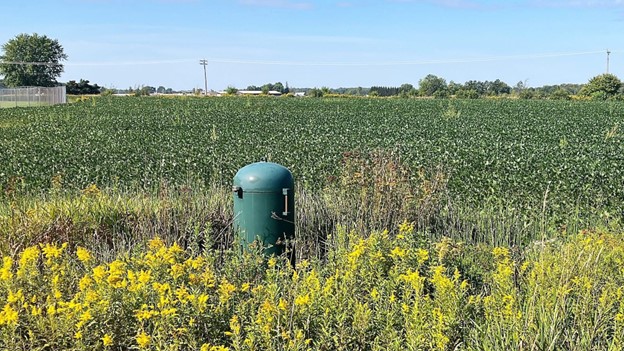
Abbotsford’s Municipal Wells #8, #9 & #15 are located adjacent to the agricultural field in the background. Nitrate from the field negatively affects groundwater quality in the well. Photo Credit: Josh Soyk-Abbotsford City Administrator.
Our project seeks to reduce elevated groundwater Nitrate levels in three municipal wells constructed in a shallow sandstone aquifer by changing the land-use near the wells from traditional row crop agriculture to land-use more beneficial to groundwater quality. The City of Abbotsford, who owns the municipal wells will work with the Abbotsford School District who owns the land to implement land-use changes that will provide new educational opportunities for students, improve groundwater quality, and to create a plan to sustainably replace revenue lost by not farming the land. The city will monitor Nitrate levels in the municipal wells to quantify how the change in land use near the wells improves groundwater quality.
Outcomes of the overall project will be the transition of farmland to an alternative land use, the monitoring of nitrate in groundwater wells as land cover types are altered. Community related outcomes will be the learning opportunities created for school students to observe and participate in the transition of land management and monitoring of groundwater quality. Students will also use the new spaces for related science and agriculture programs. The impact of this project will be learning how groundwater nitrate concentrations change in a shallow sandstone aquifer due to the retirement of farmland and subsequent land cover management decisions.
The project consists of 2 phases, a planning and initiation phase (Phase I) and an implementation and long-term development phase (Phase II). The first phase was performed in partnership with a fellow from Thriving Earth Exchange and concluded in Spring, 2023. The second phase is ongoing and remains a partnered effort between the City of Abbotsford, Abbotsford School District, and Wisconsin Rural Water Association.
Phase I
The goal of Phase I was to plan, apply for funding, and transition legacy agricultural land to an alternative land cover type while continuing ongoing sampling of nitrate in Abbotsford drinking water wells 8,9, and 15. This transition began in October 2022 when the 17 acres of school-owned farmland was retired from traditional corn and soybean harvesting and planted with ryegrass cover. Meanwhile, land cover planning and guidance for funding support was pursued from multiple technical experts and funding sources. These consulted experts included Charles Schneider at CESA 10, Brian Johnson, Justin Kapusta and multiple other Wisconsin Department of Natural Resources (WI DNR) employees, Lance Willson at Cummins, and Scott Stipetich at Pheasants Forever. These experts assisted in consulting on landscape cover changes including solar fields, educational groundwater monitoring, forestry, fruit orchard development, and sources of volunteers and funding for these options. These experts provided the knowledge, and resources that enabled the team members to decide on land cover change to fit the project priorities.
The selected land use changes consisted of a mix of hardwood forest, orchard, outdoor learning gardens, and native prairie grasses. This decision was made to ensure a diverse mix of land use for educational opportunities, feasible cost and available funding acquisition, and opportunity for revenue generation. The hardwood forest was officially designated as a school forest and funded by the WI DNR, which provided WI native hardwood tree saplings and lent tools for planting them. The orchard trees were selected from Edgar Evergreens, and will consist of a variety of fruit trees including apple, and pear trees. The orchard will be used for agronomy classes, and potential revenue generation. The outdoor learning gardens will be an area reserved for outdoor classes and will consist of two wild-life supporting gardens: a songbird garden and butterfly garden. Both garden projects will be planned by and partially funded through the efforts of local girl scouts for their Gold Awards. This educational garden outdoor space will help support local wildlife, and provide space for outdoor learning in biology and other science classes. Finally, the remaining land will be planted with native prairie grasses. Upon the conclusion of Phase I this land cover changes were planned, and planting events were scheduled for the hardwood tree and orchard trees. The orchard tree planting will be assisted with volunteers from Cummins, an engine design and manufacturing company with interest in employee volunteering in local communities. Upon the conclusion of Phase I the land cover plan consisted of 3 acres of hardwood trees, 1 acre of fruit trees, <1 acre of educational gardens, and the remaining approximate 13 acres of native prairie grasses (Figure 1).. However, the exact areas are subject to change during planting.
Overall, Phase I accomplished the development of a land cover change plan, acquisition of funding for the land cover changes, planned the planting events for two major land cover changes, retired cropland to ryegrass cover, and saw the continuous monitoring of nitrate in the drinking water wells. Thus, Phase I was considered successful and was concluded in Spring 2023.
Figure 1: Map of planting plan for Abbotsford School District retired cropland.
Phase II
Phase II will implement the plan developed in Phase I, monitor and summarize nitrate changes in the drinking water wells, and continue exploring other long term land cover change options. Implementation of the Phase I plan is anticipated for late spring 2023 into summer 2023. Nitrate concentration change monitoring will continue through implementation and after the development of the land cover change plan. Results of the nitrate change will be analyzed and will be shared with the local community, and WI technical groundwater community at conferences. Finally, future long term land cover changes will be considered, including potential groundwater monitoring wells, a walking trail, and a greenhouse. Phase II of the project will be completed when all of the partnered groups agree that the land has been sufficiently converted, and assessments of nitrate in groundwater quality are observed after landcover changes.
The success of Phase I was due to an engaged and connected professional network, strong local partnerships, and steady project organization pace.
A major surprise and reason for success was the snowball effect of professional networks brought in by each team member. The collaboration between project team members from the school district, city, and Wisconsin Rural Water Association brought in multiple networks of professionals known by each project team member and resulted in many interested, knowledgeable and helpful experts that contributed to the project. Notably, the WI DNR maintained strong communication and was eager to help through multiple branches and employees. Further, the team members suspect that the connections made by this connection of networks brought forth by different team members will continue to be helpful for Phase II and other projects in the city of Abbotsford.
Further, the project was also successful because the team members themselves come from diverse backgrounds and areas of enterprise and local knowledge. Including Abbotsford school district staff, and a teacher in meetings ensured that educational focus and legal and fiscal feasibility was always a part of the conversation, as the owners of the land.. The inclusion of a city administrator helped to build connections regarding local land management, perspective about utilities and resources available, and allowed for the continuous monitoring of nitrate in the wells, a task already conducted by the city. Finally, the participation of a rural water expert helped to identify the opportunity of using the agriculture land retirement as a learning opportunity for land management and drinking water protection, and also brought in technical skills in groundwater and mapmaking, as well as knowledge of professionals to consult on the project.
Finally, the project was able to stay on time and maintain clear direction because of organized meetings and documentation. Taking notes at all meetings allowed for a beneficial reflection of how far Phase I had progressed. Scheduling the next meeting at the end of a meeting being held helped to set a pace to keep the project progressing.
The project was intended to span from its start in April 2022 to September 2023, lasting for a total duration of 17 months. This plan was modified to create a clear divide between Phase I and Phase II, with Phase I concluding in Spring 2023, about 1 year after starting the project. A detailed timeline of events as they occurred, and are scheduled are provided below.
Project Timeline:
Phase I:
Phase II:
The City of Abbotsford is a small community located in Central Wisconsin. Located in both Clark and Marathon counties, Abbotsford has a population of 2,500 people. The City of Abbotsford has a very diverse population with almost 40% being of the Hispanic culture. The municipal government will be working on this project to lower the nitrate levels in three of the city’s wells. Groundwater has been an interesting subject for the City of Abbotsford as the city currently has 26 wells and 3 water treatment plants. The city is currently in the process of adding 3 new wells and rehabbing several other wells to gain capacity. The main goal for the City of Abbotsford is to maintain our current capacity of wells along with adding more wells for future growth. Working with Thriving Earth Exchange the City of Abbotsford is confident that we can lower the nitrate levels in our current wells and avoid having to take those wells off-line.
The City of Abbotsford would like to learn how the conversion of 17 acres of traditional row crop agriculture to non-agricultural land use can improve groundwater quality pumped from three of the city’s municipal wells historically high in nitrate. The city has engaged the Abbotsford School District, which both owns the 17 acres and is interested in exploring new educational opportunities created by the land-use conversion. The school district has formed a committee of staff and teachers who are interested in exploring different land use options and educational opportunities along with developing new revenue streams from the land which can replace the revenue generated for the school by farming the land.
The project has 5 priorities, ranked in order:
The 17 acre farmland will initially be taken out of production and planted in native cover. The three municipal wells will be sampled for nitrate monthly to monitor how concentrations change. The city and school hope to engage students in the monitoring process to create a better understanding of local groundwater quality. Outcomes of the project will be the transition of farmland to an alternative land use, the monitoring of nitrate in groundwater wells as land cover types are altered. Community related outcomes will be the learning opportunities created for school students to observe and participate in the transition of land management and monitoring of groundwater quality. The impact of this project will be learning how groundwater nitrate concentrations change in a shallow sandstone aquifer due to the retirement of farmland and subsequent land cover management decisions.
Project Projection
It is foreseen that the current project will lead to a secondary phase project to address long term goals. The first project, as described in this work, limits its scope to the transition of legacy agricultural land to an alternative land cover type and observation of associated nitrate levels in the drinking water wells. The second project, which we subsequently call the Long Term project, will aim to address two priorities that require an extended timeline.
The goals of the Long Term project will be to apply land use management that will 1) serve as educational and community asset, and 2) provide revenue generation to make up for revenue lost from agriculture land retirement. The Long Term project was separated from the current project because of the longer timeline necessary for selection, funding acquisition, and implementation of ideal land management options. Land cover options initially identified for the Long Term project include: an outdoor learning space, nature trails, high tunnel greenhouse or school garden, solar farm and more. It is not yet determined if Thriving Earth Exchange partnership will be sought for the Long Term project. Planning for the Long Term project will include the same community members and project leaders, and may coincide with the implementation of the first project.
The project is intended to span from its start in April 2022 to September 2023, lasting for a total duration of 17 months. A detailed timeline of notable events is provided below.
Project Timeline:
Continual Work
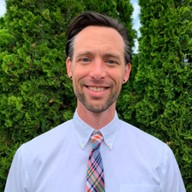
Andrew Aslesen-Source Water Specialist, Wisconsin Rural Water Association
Andrew has been a Source Water Specialist with the Wisconsin Rural Water Association since March 2010. He works with community water systems to solve groundwater quality and quantity issues, primarily through assisting the water systems with developing and implementing wellhead protection plans. Previously Andrew worked as a project assistant with the Wisconsin Geological and Natural History Survey from 2008 to 2010. Andrew earned a Bachelor’s degree in Geography with a Geology emphasis from the University of Wisconsin-Whitewater in 2008 and a Masters degree in Water Resources Management with a Hydrogeolgoy emphasis from UW-Madison’s Nelson Institute of Environmental Studies in 2010.
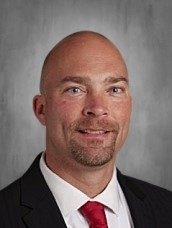
Ryan Bargender-District Administrator, Abbotsford School District
Ryan serves as the District Administrator for Abbotsford School District. Prior to his current role, he served the district as middle/high school principal for seven years. Ryan received his bachelor’s degree from St. Cloud State University in Technology Education (2001) and a master’s degree from Marian University in Educational Leadership in (2014). He completed his superintendent licensure program through Marian University (2019). Ryan previously taught Technology and Engineering Education (TEE) in the Kimberly and Athens school districts.
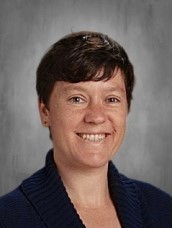
Amber Kraus-EL Learning Services Coordinator, School District of Abbotsford
Amber is the EL Learning Services Coordinator at Abbotsford. She helps coordinate the English Learner and Dual Language programs. Previously she has taught Spanish at the high school level as well as serving as a resource teacher for beginning English speakers.
Amber graduated in 2006 from UW-Eau Claire with a bachelor’s degree in teaching Spanish and English to speakers of other languages. After that, she attended graduate school at Concordia College in Moorehead, Minnesota, graduating with a master’s degree in teaching world languages in 2012.
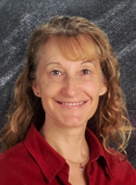
Georgia Kraus-District Accountability Coordinator, Abbotsford School District
Georgia grew up in northern Wisconsin and went to college at Saint Olaf in Northfield, Minnesota and earned a Major in Sports Science and a Minor in Sports Medicine. At the University of Wisconsin River Falls, she completed a biology major, teaching certification, and a master’s in teaching. Georgia then earned a Doctorate in Organizational Leadership. Prior to her service at Abbotsford, she was fortunate to teach Science. Her administrative career has included serving as an Assistant Principal & Athletic Director, 4K-12th-grade Principal, Elementary Principal & District Administrator, and now District Accountability Coordinator for Abbotsford School District.
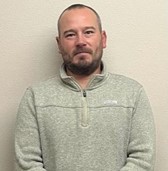
Josh Soyk-City Administrator, City of Abbotsford
Josh has worked for the City of Abbotsford since 2009. He originally worked on a pilot study to treat effluent wastewater into potable drinking water. The pilot study was successful, however the City of Abbotsford decided to go a different route to get more water supply. In 2010 the City of Abbotsford constructed 12 new wells along with a new water treatment plant. Josh was the main operator for the new treatment plant and 12 wells. In 2019 he was promoted to Water/Wastewater Manager for the City of Abbotsford. Along with his duties as Water/Wastewater Manager, Soyk accepted the position of City Administrator in January 2022.

Jillian Tyler-Agriculture Teacher, Abbotsford High School
Jillian grew up in central Wisconsin and attended the University of Wisconsin River Falls where she earned her Bachelor’s degree in Agricultural Education (2021). Jillian currently serves as the Abbotsford Agricultural Education Teacher and FFA Advisor. Having grown up on her family’s dairy farm, Jillian was always surrounded by various facets of agriculture which led her to her current role.
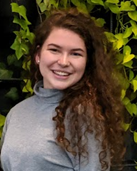
Isabelle Horvath-PhD Candidate, Civil, Construction & Environmental Engineering, Marquette University
Isabelle is the Thriving Earth Exchange Fellow on the project. Isabelle is PhD candidate in environmental and water resources engineering at Marquette University, where she studies urban water quality issues, focusing on sources of unreliable green stormwater infrastructure treatment performance. Isabelle is a native of Western New York, where earned her B.S. in Environmental Resource Engineering from SUNY College of Environmental Science and Forestry (SUNY ESF) in 2018. Isabelle moved to Milwaukee, WI in 2019 where she earned her M.S. in Water Resources Engineering from Marquette University (2020). Isabelle remained at Marquette for her PhD, which she is projected to complete in Spring 2023. Outside work, Isabelle is an avid reader, hiker, and baker.
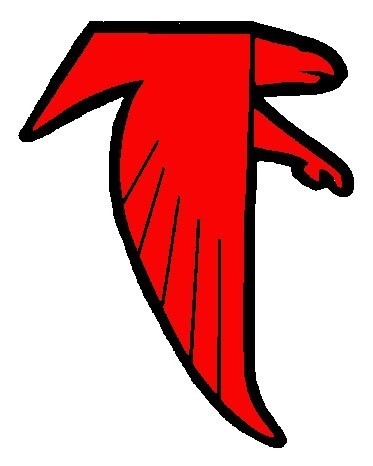
The School District of Abbotsford is a place with many great things happening. Abbotsford Elementary School features a K-5 dual language program. The elementary school was also recently recognized by the Wisconsin RTI Center and the DPI for its Multi-Level Systems and Supports, receiving a silver rating in math and bronze rating in English. Abbotsford Middle/Senior High school has received the Title I School of Recognition award for 15 consecutive years.
The City of Abbotsford is a small community doing business in a big way. Located at the junction of Highways 29 and 13, Abbotsford is home to over 160 businesses and industries which provide a wide variety of services and employment opportunities. Industry is served by two major highways and railway freight services. The community is in the heart of dairyland and is proud of its farm community heritage.
Wisconsin Rural Water Association (WRWA) is a non-profit organization whose mission is assisting, educating and representing their members in the water and wastewater industries. WRWA is the leading water and wastewater industry trade association in Wisconsin with over 580 water and wastewater system members and more than 175 business members.
(c) 2025 Thriving Earth Exchange